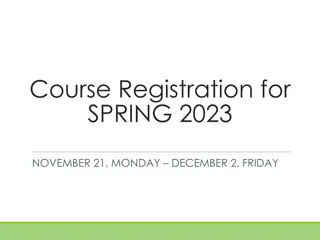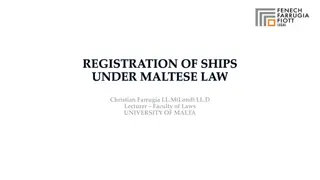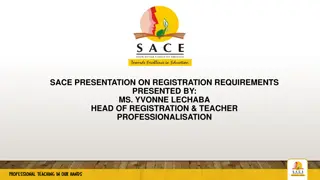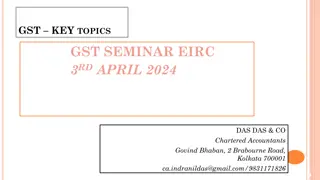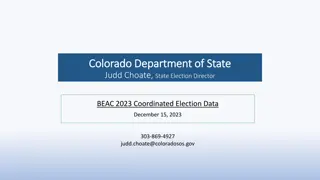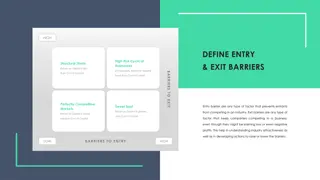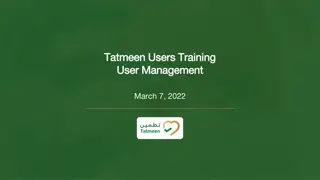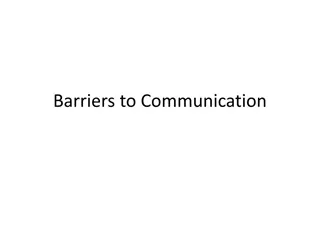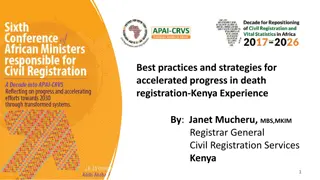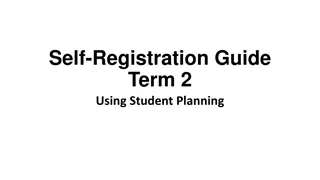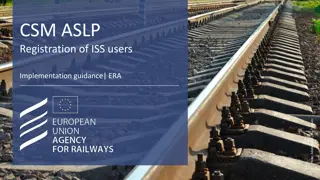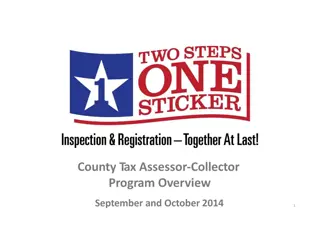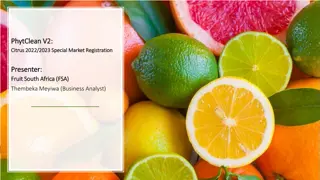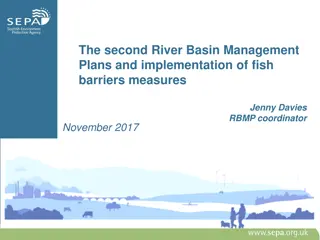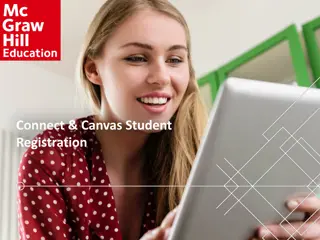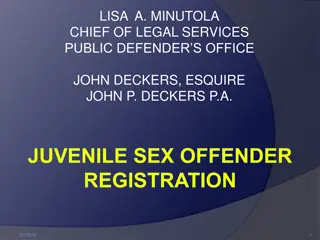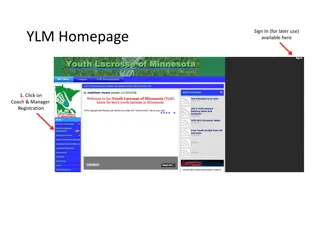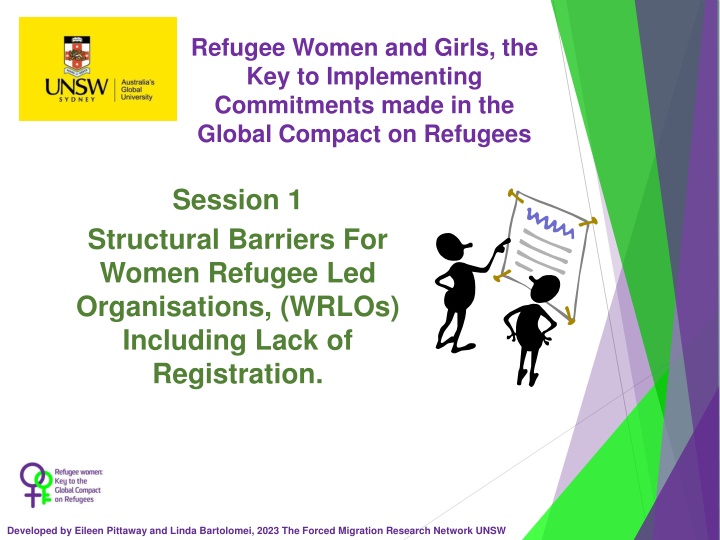
Structural Barriers Faced by WRLOs: Lack of Registration
Structural issues embedded in social institutions pose challenges for Refugee Women-Led Organizations (WRLOs), particularly in terms of registration barriers, impacting their effectiveness and funding prospects. Explore the implications and potential solutions in this insightful session.
Download Presentation

Please find below an Image/Link to download the presentation.
The content on the website is provided AS IS for your information and personal use only. It may not be sold, licensed, or shared on other websites without obtaining consent from the author. If you encounter any issues during the download, it is possible that the publisher has removed the file from their server.
You are allowed to download the files provided on this website for personal or commercial use, subject to the condition that they are used lawfully. All files are the property of their respective owners.
The content on the website is provided AS IS for your information and personal use only. It may not be sold, licensed, or shared on other websites without obtaining consent from the author.
E N D
Presentation Transcript
Refugee Women and Girls, the Key to Implementing Commitments made in the Global Compact on Refugees Session 1 Structural Barriers For Women Refugee Led Organisations, (WRLOs) Including Lack of Registration. Developed by Eileen Pittaway and Linda Bartolomei, 2023 The Forced Migration Research Network UNSW
Aims of the Session The aims of this session are to enable stakeholders to make a realistic assessment of the structural challenges faced by WRLOs in specific contexts, and to plan realistic ways to accommodate or overcome these. Intellectual property of E Pittaway and L. Bartolomei; Reuse is permitted with author attribution
Structural Issues These refer to problems that are a result of the biases embedded in the fabric of social institutions, such as education, family, religion, government and economic institutions. It applies both in countries of origin and host countries and may differ in each site. These biases create great advantages for some members of society and major disadvantages for others, who may be already marginalized. They are said to be designed to provide structure, guidance and order in any given society, and are shaped by ideologies and dominant beliefs. Intellectual property of E Pittaway and L. Bartolomei; Reuse is permitted with author attribution
Unregistered and Registered Refugee Led Groups A major structural impediment to refugee led organisations, in particular WRLOs, is lack of the ability to register their organisations in the countries where they have sought refuge and the impact this has on their ability to function effectively and to receive funding. It presents major problems to their smooth operation, and to receiving funding from major donors. This is very political and must be handled with care and diplomacy. Intellectual property of E Pittaway and L. Bartolomei; Reuse is permitted with author attribution
Pros and Cons In sites where refugee led organisation are allowed to register, many, but certainly not all of these barriers are addressed, but it is still not easy being a minority group dependent on the good-will of others. These structural issues are beyond the power of refugees to address them alone and need the support for key stakeholders, host and donor governments to bring about change. Intellectual property of E Pittaway and L. Bartolomei; Reuse is permitted with author attribution
Tools and exercises We suggest that groups wishing to explore the barriers identified in this resource kit complete the tools and exercises with key stakeholders, and if possible, with representatives from the refugee communities as well as community leaders. Once the exercises are completed the results can be analysed to inform strategic planning, program design, implementation and evaluation when working with registered and unregistered refugee led organisations. They will highlight the different challenges faced by women s refugee led organisations. This will differ from site to site, dependent on the local socio-political environment. Intellectual property of E Pittaway and L. Bartolomei; Reuse is permitted with author attribution
A Tool to examine structural barriers experienced by WRLOs The Tool is situational analysis designed to assist key stakeholders, including refugee groups, NGOs, INGOs UN Personnel and Donors to clearly identify local structural barriers to RLOs and WRLOS, and potential solutions. It will help decide which model of refugee participation is realistic and viable in any given place, provide evidence for strategic planning and advocacy and guide program design, implementation and evaluation. Intellectual property of E Pittaway and L. Bartolomei; Reuse is permitted with author attribution
Refugee Led organisations Are/do Refugee Groups: Yes, No, Partially If not what, if anything, can be done to change this? a. Incorporated legally, b. Have de facto acceptance from local authorities c. Able to directly receive funding, and have their own bank accounts d. Work in partnership with a local or international NGO who is willing to auspice the funds on their behalf e. Allowed by authorities to hold meetings? f. Have the right to work, g. Have de facto acceptance of their work status from local authorities, Intellectual property of E Pittaway and L. Bartolomei; Reuse is permitted with author attribution
Additional barriers for WRLOs a. Do WRLOs have the same or different challenges If yes, Please list them Who could help What can be done to address this? a. b. c. e. f. Intellectual property of E Pittaway and L. Bartolomei; Reuse is permitted with author attribution
Use the same exercise to assess UN agencies and INGOs Do Local NGOs have sufficient guidance/training to support leadership and participation from: Yes, No, Partially If not what if anything can be done to change this? Local representatives of National and International NGOs Local authorities Local UN Agency representatives Job-security in the transition to a focus on refugee-led and funded service provision A Human Rights approach to their work A gender sensitive approach to their work Intellectual property of E Pittaway and L. Bartolomei; Reuse is permitted with author attribution
and Donors In the Projects that they fund do Key Donors: Require an analysis of the impacts of GBV Yes, No, Partially If not what if anything can be done to change this? Actively support a human rights and community-development focused criteria Actively participation and refugee led work. support women refugee Actively support a gender equality focused criterion Have a rigorous evaluation framework for the programs they fund which examines these criteria. Understand that most of the WRLOs strengths are in the community development approaches that take time in order to build trust, establish equal partnerships or participatory approaches that meaningfully engage other community members. Show willingness, and the flexibility needed to accommodate this process? Intellectual property of E Pittaway and L. Bartolomei; Reuse is permitted with author attribution
Registered v Unregistered organisations Tools and Exercises Participants may not have all the information to complete this tool and will have do some research. This could include consulting with local experts, and seeking legal advice Intellectual property of E Pittaway and L. Bartolomei; Reuse is permitted with author attribution
Benefits of Registration What are the benefits of registering a RLO in this country? What steps need to be taken for this to happen? Is a positive outcome likely in this site? If Yes, which stakeholders can support this? If no, can the problems be circumvented? (eg Auspice role by local NGO?) A B C Etc Are there additional benefits for WRLOs? As Above As Above As Above As Above A B C Etc Intellectual property of E Pittaway and L. Bartolomei; Reuse is permitted with author attribution
Risks associated with Registration Is a positive outcome likely in this site? If Yes, which stakeholders can support this? What are the risks associated with an RLO applying for Registration in this country What steps need to be taken to minimise this risk? If not, is it better not to attempt to gain registration? A B C Etc What are the risks associated with a WRLO applying for Registration in this country As Above As Above As Above As Above A B C Etc Intellectual property of E Pittaway and L. Bartolomei; Reuse is permitted with author attribution
Getting Community Input Exercises to be undertaken with Refugee groups, and other key stakeholders to gain their insights. Intellectual property of E Pittaway and L. Bartolomei; Reuse is permitted with author attribution
TheStoryboard Tool A less formal way of analysing the situation and one suitable for situations where some of the participants might be pre-literate, would be to use the Storyboarding Exercise They draw and present their responses to questions about a problem facing their community, what is available to respond to this problem, their ideas for other solutions, and what role the community, NGOs or other groups could take in these solutions. These are documented and form core research data. Intellectual property of E Pittaway and L. Bartolomei; Reuse is permitted with author attribution
The Storyboard Tool If Storyboarding is used, the six questions would be: 1. What are the biggest barriers to refugee led work which the women s groups in xx site experience? 2. What are the impacts of these barriers on the women s groups? 3. Which local stakeholders might be able to help to change this? 4. What do the women need to be able to move forward and run their own organisations? 5. What actions can realistically and safely be taken to support WRLOs? 6. What are the hoped for outcomes if this happens? The facilitators of the groups would then combine the feedback and fill in the Checklist Intellectual property of E Pittaway and L. Bartolomei; Reuse is permitted with author attribution

